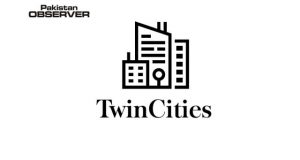Staff Reporter
After seven years of partnering with the Government of Pakistan’s federal and provincial education leaders to improve the reading skills of more than a million Pakistani school children, the United States Agency for International Development’s (USAID) Pakistan Reading Project concluded its programming on September 14.
To mark the occasion, education officials from the governments of Pakistan and the United States, along with USAID’s implementing partner, the International Rescue Committee, held a ceremony at the Islamabad Marriott Hotel to showcase the program’s success.
The Pakistan Reading Project (PRP) benefitted 1.7 million children through training more than 27,000 teachers in reading instruction across Pakistan.
The project developed and distributed 7.3 million copies of learning material for teachers and students in five languages, including Urdu, Sindhi, Pashto, Balochi, Brahui; and two dialects of Sindhi and Pashto spoken in Balochistan.
“One of the successes of the project was to further validate the importance of learning to read in local languages in the early grades of school,” said Deputy Mission Director Michael Nehrbass.
“Our hope is that the project’s methodology can expand to all public schools around the country through the support of the Pakistan government and PRP’s partners.
As we have seen from the schools where the project was successful, this initiative can improve the foundational reading skills of early grades students, which will lead to more success in the later grades.”
All of the Project’s material is available on Pakistan’s government education department websites in Khyber Pakhtunkhwa, Balochistan, Sindh, and the Islamabad Capital Territory for free public access.
The reading learning materials also are available on the Global Digital Library portal for free downloads at www.digitallibrary.io.
PRP’s work with provincial curriculum departments and textbook boards resulted in the adoption of Urdu and Sindhi language curricula and improved textbooks for grades one and two, which incorporated phonics-based teaching instruction, assessment, and gender inclusion and equity.
PRP also supported developing the curriculum for teacher education and training for more than 7,700 youth through tertiary education programs. Consequently, 41 percent of teacher trainees are now employed and 21 percent are pursuing higher education.









